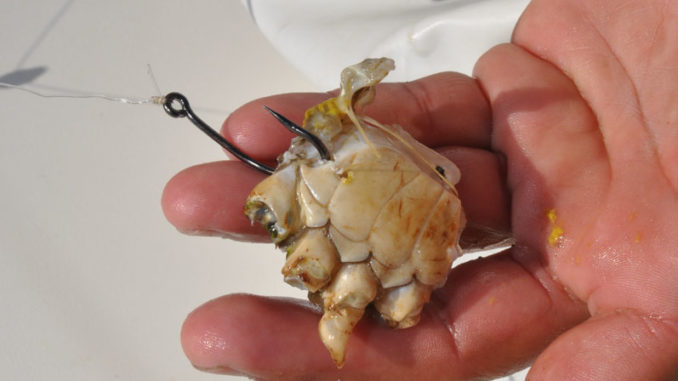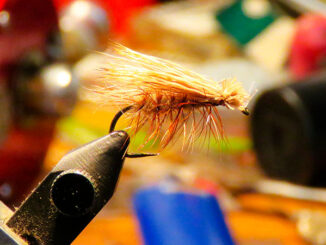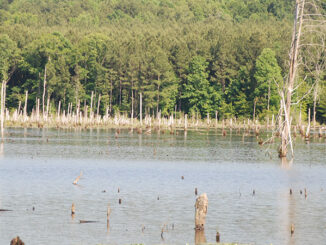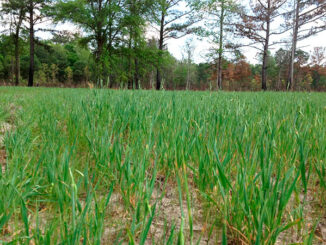
A blue crab can turn on gamefish when other baits are not producing strikes, but many anglers overlook using them. Many fishermen are aware that these crustaceans make excellent bait for red and black drum, they also attract speckled trout, flounder and other game fish.
For best results, blue crabs should be fished alive. To make them easier to handle, anglers should keep them on ice, which slows their metabolism.
To make crab baits, an angler should remove the legs using a knife or shears. After the legs are removed, the crab can be cut in half or broken into two pieces. It is easier to turn a crab into several smaller baits by using a knife or shears than by breaking it, which can damage much of shell. The crab should be hooked in a solid part of the shell, not a leg opening or cracked area.
An advantage of using a crab is that it stays on the hook longer than delicate baits such as a shrimp. Another advantage is that small fish feeding on a crab creates ready made chum, which attracts larger gamefish. Even if they do not immediately hone in on the crab before the smaller fish have cleaned out the shell, they will bite other baits cast to the same vicinity.





Be the first to comment